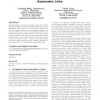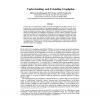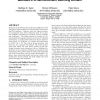622 search results - page 116 / 125 » Solving the Robots Gathering Problem |
PEWASUN
2004
ACM
14 years 2 months ago
2004
ACM
In many instances, an ad hoc network consists of nodes with different hardware and software capabilities as well as power limitations. This is the case of ad hoc grids where devi...
ECP
1997
Springer
14 years 1 months ago
1997
Springer
We provide a reconstruction of Blum and Furst’s Graphplan algorithm, and use the reconstruction to extend and improve the original algorithm in several ways. In our reconstructi...
GECCO
2006
Springer
14 years 19 days ago
2006
Springer
To help unravel the structure of the universe, astronomers have developed systems which observe large clusters of objects at the same time. One such system is the 2-degree field s...
GECCO
2006
Springer
14 years 19 days ago
2006
Springer
Two mathematical and two computational theories from the field of human and animal learning are combined to produce a more general theory of adaptive behavior. The cornerstone of ...
GECCO
2006
Springer
14 years 19 days ago
2006
Springer
Both genetic algorithms (GAs) and temporal difference (TD) methods have proven effective at solving reinforcement learning (RL) problems. However, since few rigorous empirical com...



